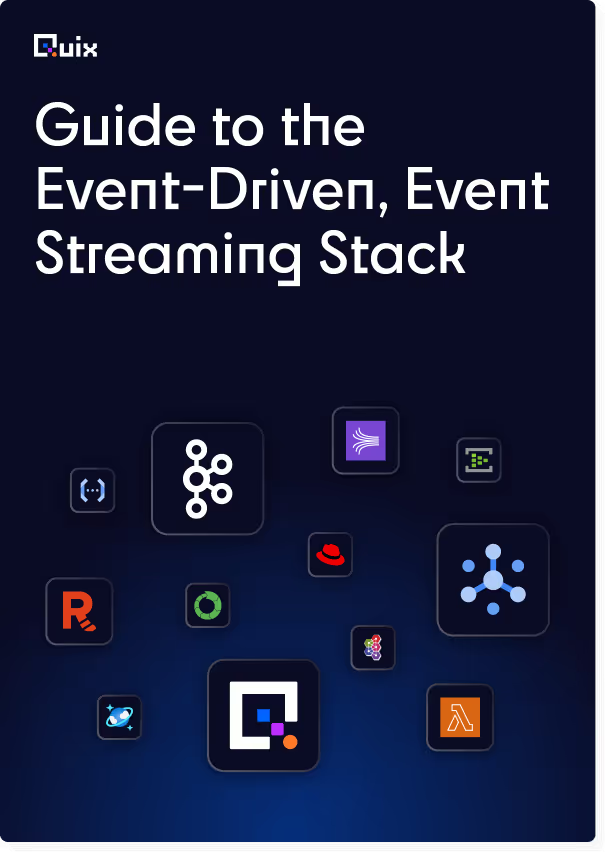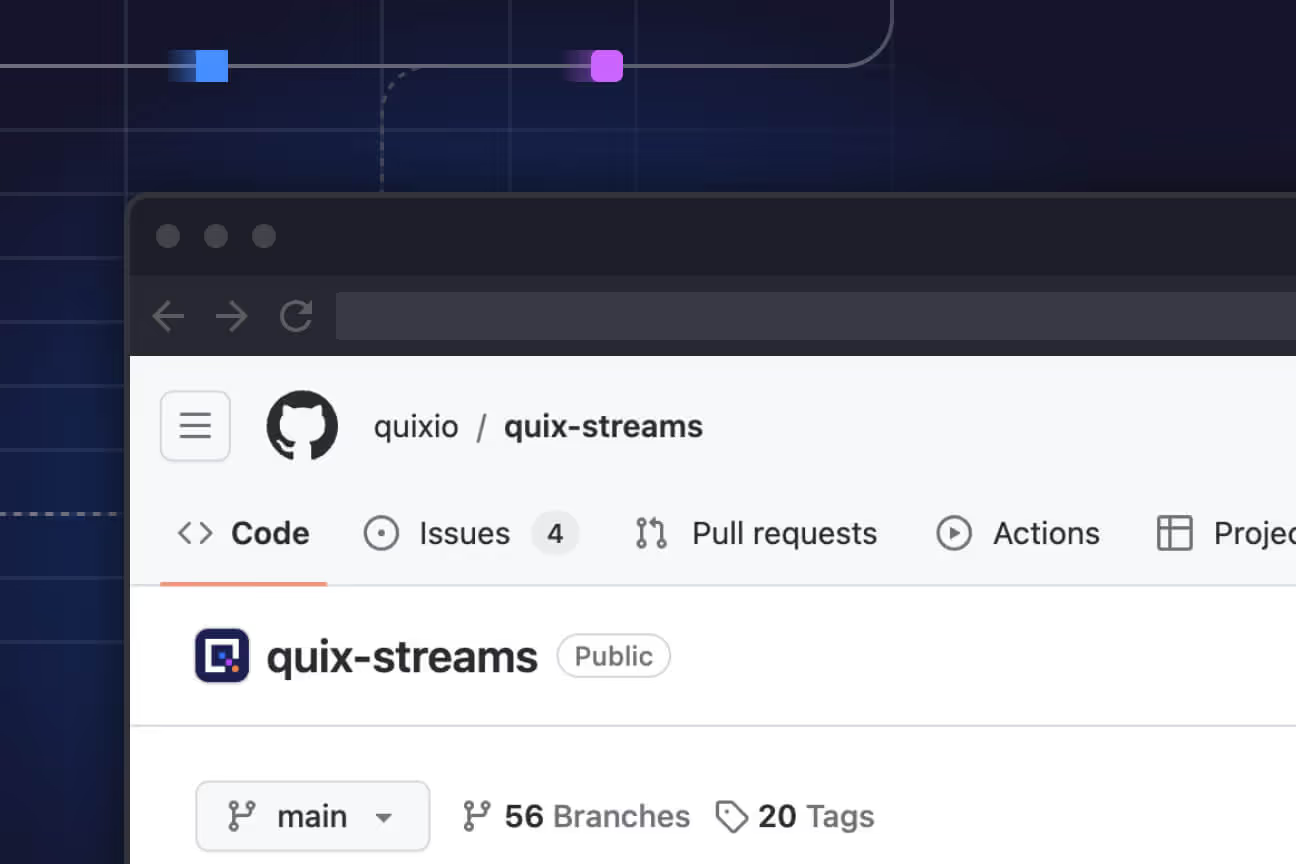How machine learning and AI are improving cybersecurity
Playing catch-up to online fraud? Monitor your data in real time. AI + streaming data analytics stops cyberthreats faster.

Playing catch-up to online fraud? Monitor your data in real time
Cybercriminals are more sophisticated than ever — infiltrating computers, servers and IoT devices — yet businesses are often ill-equipped to protect themselves and their customers. The global pandemic punched even more holes in security protocols, with more people working from home from unprotected or under-protected networks while more of life moved online.
The solution to this barrage of security threats and breaches could be machine learning (ML) and artificial intelligence (AI), programs designed to identify potential vulnerabilities and thwart fraudulent activities. But this solution requires a massive amount of real-time data processing and analysis, which is why Quix is helping customers automate cybersecurity solutions quickly and more efficiently than traditional big data processing.
The evolution of ML and AI in cybersecurity and fraud detection
How did ML enter the cybersecurity industry in the first place? Before computers were powerful enough to crunch through vast data, researchers tried to incorporate ML into cybersecurity solutions.
In 1987, Dorothy Elizabeth Denning proposed the first anomaly detection model for intrusion detection systems (IDS). A decade later, the Defense Advanced Research Projects Agency (DARPA) provided one of the oldest IDS datasets in cybersecurity.
These first cybersecurity models were based on unsupervised learning algorithms, which can look for suspicious, previously unknown patterns among unlabelled data. Unfortunately, the algorithms also generated many false positives. More recently, with the rise of big data, IT experts combine both unsupervised and supervised learning algorithms and train their models on historical data.
Traditionally, engineers built ML algorithms on batch data processing, meaning that data is first collected and then fed into an analytics system. With this method, identifying and containing a breach could take days or weeks — it can only move as fast as a batch is scheduled for download and processing.
Now, fraud detection needs a much faster system that can catch cyberattacks on the fly.
Time is critical for cybersecurity: from data batching to data streaming
Batch processing entails time latencies of hours or even days. It can work to automate payroll processes and invoices, but it is not ideal for time-critical cybersecurity.
The more recent development of micro-batch processing makes data available in “near real time,” approximately a minute. But can you imagine asking every person making a transaction to wait a full minute before their credit card is authorized? The latency is just too slow to deliver actionable, valuable results.
Modern cybersecurity requires stream processing that can handle latency in seconds to milliseconds. Imagine how many gigabytes of customer data a cyber-attacker could steal in a single minute or how many transactions the criminal could rack up.
To look at the problem facing cybersecurity engineers, we tested Apache Spark, a popular, open-source analytics engine. Spark was designed for ETL workloads: to Extract data from a data lake, Transform it, and then Load it into the target database. We found that Spark is not optimal for real-time processing, even when connected to real-time data streams.
To be efficient, Spark needs to accumulate data in minutes-long batches — and in the intervening minutes between each batch processing window, cybercriminals could do millions of dollars worth of damage.
However, super-fast, real-time stream processing is one of Quix’s strengths. Our platform processes data in nanoseconds, making it far more capable than Spark at detecting cybercrimes.
Using real-time data stream processing and machine learning for early detection
Data streaming is built on message broker technologies such as Apache Kafka. We found that Kafka’s high-speed technology helps to reduce latency. Still, its processing capabilities are limited to basic operations such as aggregation, making the complex effort of detecting fraud more difficult.
Quix solves this problem by using Kafka for streaming data while providing a serverless computing environment where ML engineers can develop and deploy ML/AI algorithms.
Quix offers a platform to:
- Stream data in real time and store it in context to ensure relevance
- Train ML or AI models on historical data (e.g., past financial transactions)
- Connect the model directly to the broker so that the deployment can process every live transaction
- Retrain the model regularly to fight new cyber threats.
The transition from traditional data warehouses to cloud infrastructure
In 2019, Forbes Technology Council wrote that building AI solutions from scratch costs 15 times more than companies planned. The article highlighted that one of the highest costs in AI development is infrastructure orchestration and pipeline systems.
This presents a significant hurdle for ML/AI projects, so Quix solves this problem by providing all of the infrastructure needed in a tightly integrated, user-friendly package. This enables companies to shift their attention (and money) from building infrastructure to focusing on building better customer experience and data science applications.
Let’s dig a bit deeper into resources. All of the use cases we’ve described require resources to process and store data and people to build, configure and maintain the systems. An experienced team of 7–10 engineers can create a minimally viable product (MVP) machine learning infrastructure in a year if they know what they are doing.
Assuming people cost $100,000 per year, the cost in the first year would be in the range of $700,000 to $1 million. Growing an MVP to a large-scale deployment can take years as teams learn and iterate their way to growth. We’ve seen organizations on five-year journeys that cost tens of millions of dollars and are still developing.
Operational costs depend on technologies and message volumes. A cheap cloud virtual machine (VM) costs roughly $61 per month for 2 core CPU/8 GB RAM. To process 1 million messages per second, Apache Spark would reach full RAM capacity with approximately 22 VMs, which equals $1,311 per month. On the other hand, Quix can process the same flow of messages with 4 VMs at the cost of $244 per month. Furthermore, since it is advisable to not exceed 50% capacity, we’re looking at around 44 VMs for Spark and 8 VMs for Quix, which makes the pricing comparison even more favorable for Quix.
New pressures accelerating the importance of cybersecurity
Cyber attacks cost businesses time and money, and can include the theft of intellectual property and corporate information. In 2020, the average cost of a data breach was $3.86 million globally and $8.64 million in the United States.
Furthermore, consumers and governments expect companies to adopt increasingly efficient cybersecurity and privacy measures (e.g. the GDPR law in the EU and the UK). That means that cybercrimes can ruin companies’ reputations and may lead to regulatory fines and legal liability.
According to the MarketsandMarkets 2019 report, AI in the cybersecurity sector is expected to increase by 23.3% between 2019 and 2026. Another study published by Allied Market Research forecasts that the total value of this industry will exceed $300 billion by 2027, and mentions the growing trend of cloud-based security services in place of traditional hardware farms.
Our mission is to democratize access to data streaming technologies in the cloud. Quix is an easy and affordable platform for real time data stream processing, and can be used to build a strong cybersecurity defense.
Read a case study about detecting financial fraud in real time, join our community, or try Quix for free.

Check out the repo
Our Python client library is open source, and brings DataFrames and the Python ecosystem to stream processing.

Interested in Quix Cloud?
Take a look around and explore the features of our platform.

Interested in Quix Cloud?
Take a look around and explore the features of our platform.

.svg)





